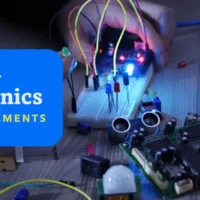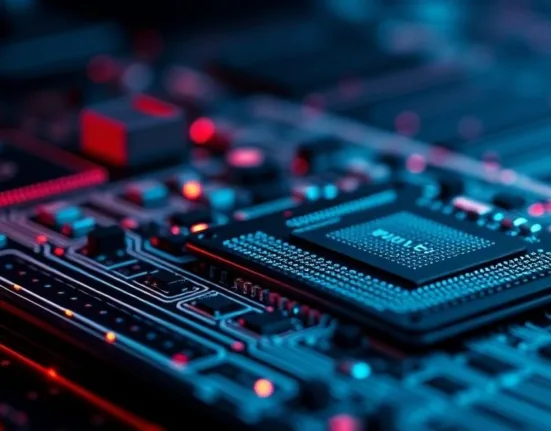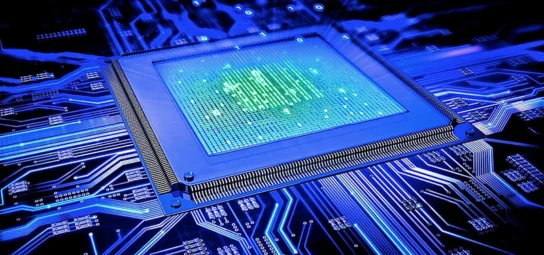FPGA Development Faces New Challenges as AI and Software Shift Graduate Focus
- by Abhinav Kumar
- 15 October 2025
- 4 minutes read

- FPGA market growth continues at 7.6% CAGR, driven by AI, 5G, and edge computing demands.
- Graduate interest in hardware design is declining, with more students favoring software, AI, and project management roles.
- Industry innovation persists, but technical workforce gaps and entry barriers challenge the RTL and HDL pipeline.
A surprising fact: The global FPGA market is expected to more than double in value, reaching $17.53 billion by 2035, fueled by rapid advances in AI, telecommunications, and automotive technologies. Yet, even as demand for field-programmable gate arrays (FPGAs) surges, the pipeline of new graduates entering hardware design roles appears to be thinning—raising concerns about the future of digital design engineering.
FPGA Market Growth and Technical Evolution
Field-programmable gate arrays have become essential for real-time data processing, AI acceleration, and next-generation networking applications. Their hardware-level flexibility and low latency make FPGAs a preferred platform in industries like data centers, automotive, aerospace, and telecommunications. Notably, demand for FPGAs is being propelled by:
- Edge AI workloads and rapid prototyping in sectors requiring custom hardware post-manufacture
- Low-end FPGAs supporting cost-sensitive applications in consumer electronics and industrial IoT
- Mid-range FPGAs built on 22/28 to 90 nm nodes, balancing power efficiency and performance for long-lifecycle markets such as aerospace and defense
Major vendors—including Xilinx (AMD), Intel, Lattice Semiconductor, and Microchip Technology—continue to expand offerings with greater logic density, improved energy efficiency, and integrated AI/ML acceleration capabilities. Recent innovations, such as Altera’s Agilex 7 M-series and Efinix’s Titanium Ti180J484D1, exemplify the push toward higher bandwidth and reduced PCB complexity. The high-end FPGA segment is also seeing robust growth due to the deployment of 5G infrastructure and increased requirements for high-bandwidth, low-latency processing in autonomous vehicles and data centers.
Graduate Pipeline and Shifting Technical Interests
Despite strong industry demand, the number of new graduates pursuing hardware design, particularly in RTL (Register Transfer Level) and HDL (Hardware Description Language) roles, is declining. Several factors contribute to this trend:
- Computer engineering curricula increasingly emphasize software, machine learning, and project management over traditional digital design and hardware courses
- Many universities do not provide hands-on FPGA experience, limiting students’ exposure to practical hardware development
- Entry-level hardware roles often require advanced degrees (Master’s or PhD), with aggressive candidate filtering and fewer visible job postings compared to software positions
- Technical communities focused on VHDL and Verilog have become quieter, with fewer beginner questions and less engagement—reflecting a reduced influx of new talent
Industry experts and hiring managers report an aging workforce in hardware engineering, with fewer young professionals entering roles in electronics, power, and RF as well.
Even one reddit post at r/FPGA from a 20 year old veteran which caught my attention expressed the same concern:
“I am an old(ish) timer who has been developing for FPGAs for 20 years and lurking on boards like this for all that time… Until the last couple of years there have always been a steady stream of beginner and more advanced VHDL questions. But I have noticed in the last few years these questions have mostly disappeared… The VHDL stack overflow is pretty quiet. The VHDL channel in the discord I am in and r/vhdl is a bit like a ghost town… Are graduates not learning HDLs anymore, or are they just turning to the AIs?… So what are your thoughts? are we losing the RTL pipeline?… Or am I just becoming the dinosaur I once laughed at?”
AI, Automation, and the Changing Skills Landscape affecting New grads entry to FPGA development.
The rise of AI and automation is reshaping the skills landscape in hardware engineering. While AI-driven design tools and online resources can help answer technical questions and automate some aspects of development, they also reduce the need for entry-level troubleshooting and manual design—potentially discouraging beginners from engaging deeply with RTL or HDL. Meanwhile, demand for system-level designers and experts in embedded Linux, edge computing, and AI acceleration is increasing, further shifting the focus away from traditional hardware roles.
Key trends shaping the FPGA workforce and technology include:
- Integration of AI/ML acceleration directly into FPGA architectures
- Growing complexity of system designs requiring advanced tools and methodologies
- Heterogeneous integration of FPGAs with CPUs and GPUs for enhanced performance
- Emphasis on sustainable, energy-efficient hardware design
A table comparing hardware and software graduate job market visibility and barriers would further illustrate these trends:
| Attribute | Hardware (FPGA/HDL) | Software/AI |
|---|---|---|
| Entry-level job postings | Low | High |
| Required degree | Master’s/PhD often needed | Bachelor’s often sufficient |
| Hands-on university labs | Rare | Common |
| Candidate filtering | Aggressive | Moderate |
| Industry demand | Rising, but niche | Explosive, broad |
| Salary/benefits | Often lower, slower rise | Competitive, fast growth |
Industry Outlook: Bridging the Technical Talent Gap
As FPGAs play an increasingly critical role in AI, 5G, and edge computing, industry stakeholders face a pressing challenge: How to attract, train, and retain new technical talent in digital design. Some companies and organizations are responding with workshops, open hardware platforms, and targeted recruitment efforts. However, to sustain innovation and meet future demand, universities and employers may need to re-emphasize hands-on hardware experience, update curricula, and lower entry barriers for aspiring engineers.
The evolution of FPGA technology is unstoppable, but the pipeline of skilled RTL and HDL developers must be revitalized to ensure continued growth and innovation in programmable hardware.
Discover more from WireUnwired Research
Subscribe to get the latest posts sent to your email.









